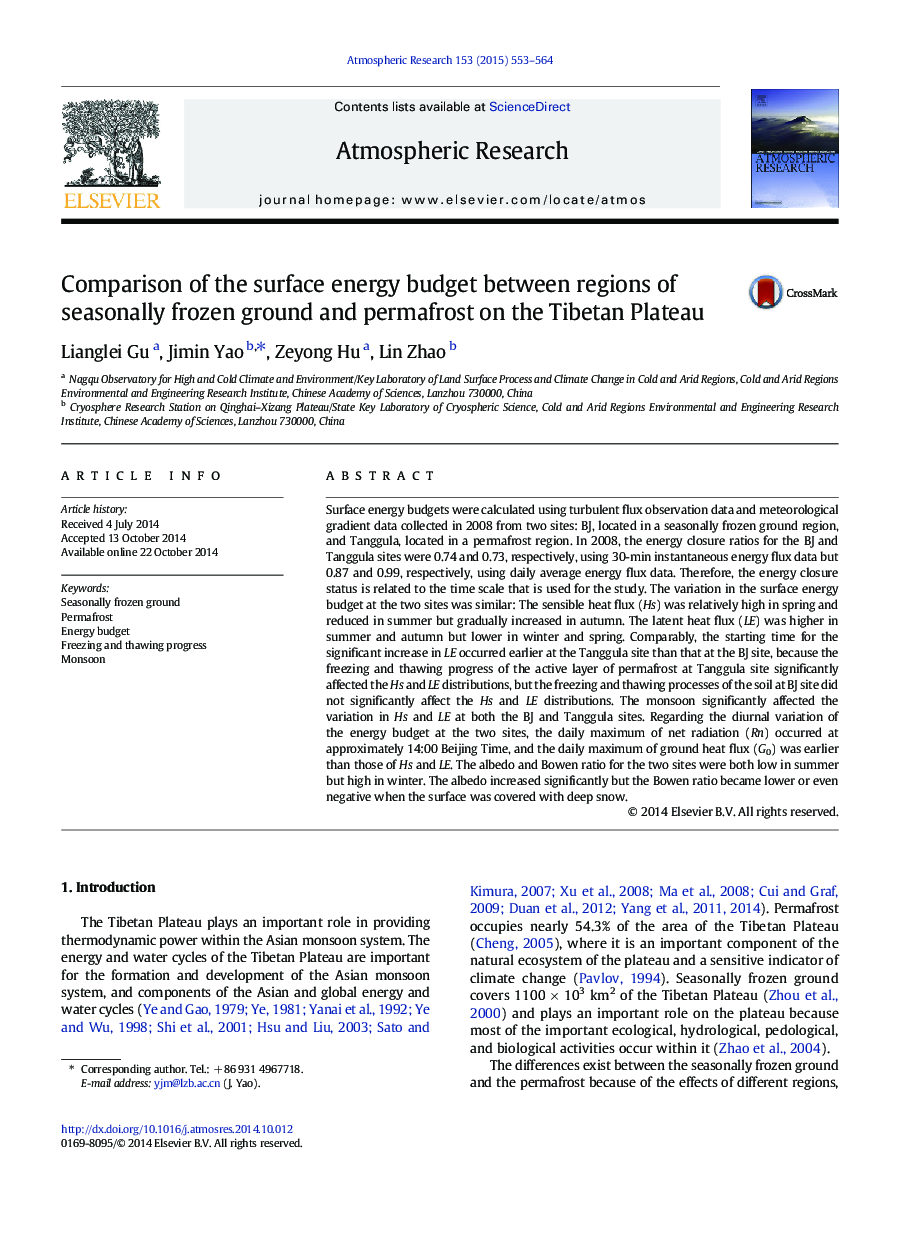| کد مقاله | کد نشریه | سال انتشار | مقاله انگلیسی | نسخه تمام متن |
|---|---|---|---|---|
| 6343467 | 1620520 | 2015 | 12 صفحه PDF | دانلود رایگان |
عنوان انگلیسی مقاله ISI
Comparison of the surface energy budget between regions of seasonally frozen ground and permafrost on the Tibetan Plateau
ترجمه فارسی عنوان
مقایسه بودجه انرژی سطحی بین مناطق زمینی منجمد فصلی و مرغوبی در افریقة تبت
دانلود مقاله + سفارش ترجمه
دانلود مقاله ISI انگلیسی
رایگان برای ایرانیان
کلمات کلیدی
زمین فصلی منجمد، طول عمر فروتن، بودجه انرژی، انجماد و انجماد پیشرفت، موزون
موضوعات مرتبط
مهندسی و علوم پایه
علوم زمین و سیارات
علم هواشناسی
چکیده انگلیسی
Surface energy budgets were calculated using turbulent flux observation data and meteorological gradient data collected in 2008 from two sites: BJ, located in a seasonally frozen ground region, and Tanggula, located in a permafrost region. In 2008, the energy closure ratios for the BJ and Tanggula sites were 0.74 and 0.73, respectively, using 30-min instantaneous energy flux data but 0.87 and 0.99, respectively, using daily average energy flux data. Therefore, the energy closure status is related to the time scale that is used for the study. The variation in the surface energy budget at the two sites was similar: The sensible heat flux (Hs) was relatively high in spring and reduced in summer but gradually increased in autumn. The latent heat flux (LE) was higher in summer and autumn but lower in winter and spring. Comparably, the starting time for the significant increase in LE occurred earlier at the Tanggula site than that at the BJ site, because the freezing and thawing progress of the active layer of permafrost at Tanggula site significantly affected the Hs and LE distributions, but the freezing and thawing processes of the soil at BJ site did not significantly affect the Hs and LE distributions. The monsoon significantly affected the variation in Hs and LE at both the BJ and Tanggula sites. Regarding the diurnal variation of the energy budget at the two sites, the daily maximum of net radiation (Rn) occurred at approximately 14:00 Beijing Time, and the daily maximum of ground heat flux (G0) was earlier than those of Hs and LE. The albedo and Bowen ratio for the two sites were both low in summer but high in winter. The albedo increased significantly but the Bowen ratio became lower or even negative when the surface was covered with deep snow.
ناشر
Database: Elsevier - ScienceDirect (ساینس دایرکت)
Journal: Atmospheric Research - Volume 153, February 2015, Pages 553-564
Journal: Atmospheric Research - Volume 153, February 2015, Pages 553-564
نویسندگان
Lianglei Gu, Jimin Yao, Zeyong Hu, Lin Zhao,
